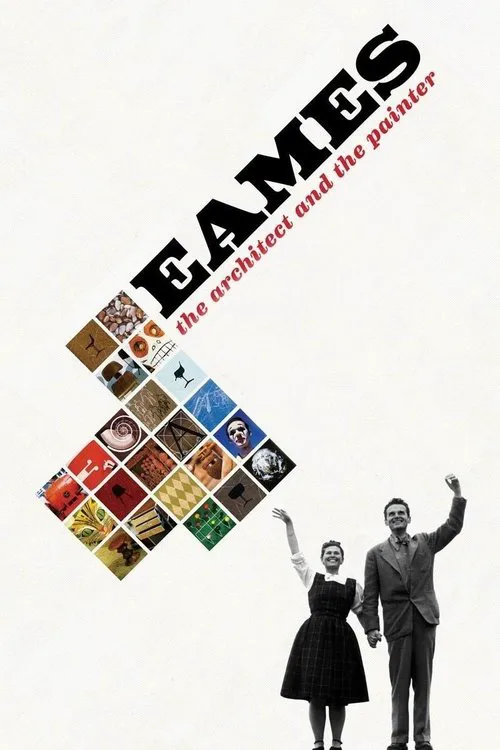Eames: The Architect and the Painter

Plot
Eames: The Architect and the Painter delves into the lives of Charles and Ray Eames, a couple whose contributions to modern design shaped the aesthetic of the post-war era. Narrated by James Franco, this documentary takes viewers on an immersive journey through the Eames Office, providing an intimate glimpse into the working process of this creative husband-and-wife team. The film begins with an examination of how Charles Eames became a prominent figure in modern design. Trained as a painter and an artisan, Eames' entry into architecture and furniture design was met with skepticism by many of his peers. However, his passion and innovative approach quickly set him apart from others in the field. Charles' early work with the T-Gruppe in the 1930s exposed him to the cutting-edge designs coming from Europe, further fueling his creative ambitions. Ray Eames, a talented artist and educator, was introduced to Charles through a mutual friend in the art world. Ray possessed a unique skillset that complemented Charles' architectural prowess and artistic vision. The couple married in 1941 and their union proved to be a dynamic catalyst for their creative work. Charles and Ray's collaboration marked a new chapter in modern design. During the post-war period, the couple was at the forefront of the 'Mid-Century Modern' movement. This era saw the rise of international-style architecture characterized by clean lines, minimal ornamentation, and the incorporation of functional elements that reflected the technological advancements of the time. The couple's furniture designs, such as the iconic Eames Lounge Chair, embodied this style and would go on to influence generations of design enthusiasts. One of the most fascinating aspects of the Eames Office was the way in which the couple managed to blend their work and personal lives. They cultivated a stimulating environment that inspired creativity and fueled their passion for innovation. This synergy is palpable throughout the film as the interview sections with the junior designers and other associates reveal a workplace that was simultaneously demanding and joyful. The Eames' output was staggering, with thousands of photographs, films, and designs produced during the forty years of the Eames Office. The sheer volume of their work reflects not only their tireless energy but also their willingness to experiment with diverse mediums. The films, which showcased modern dance, industrial processes, and experimental art, are particularly notable for their pioneering use of cinematic techniques. The photographs, many of which were taken by Charles Eames, are equally impressive and provide a unique perspective on the architectural and artistic developments of the time. Through the numerous interviews, the film reveals the strong relationships that existed between Charles, Ray, and their employees. This camaraderie played a significant role in fostering inspiration and encouraging risk-taking. As one interviewee remarks, the Eames Office was not merely a workplace, but a community that nourished artistic growth and encouraged collaboration. Charles and Ray's partnership extended beyond their professional endeavors. They were each others' confidants, collaborators, and greatest critics. This symbiotic relationship allowed them to push the boundaries of their art and challenge conventional design paradigms. As the documentary illustrates, their combined efforts created works of immense beauty and functionality that transcended the individual contributions of each partner. The film takes a poignant look at the challenges faced by the Eames couple. Throughout their careers, they encountered financial struggles, health issues, and professional setbacks. These struggles are poignantly conveyed through archival materials and personal accounts that reveal the emotional highs and lows of a life driven by the pursuit of innovation. Eames: The Architect and the Painter ultimately paints a rich portrait of Charles and Ray Eames as creatives, entrepreneurs, and partners. Through their story, the documentary highlights the transformative power of collaboration and the importance of an individual's drive to challenge and innovate. Theirs is a testament to the lasting impact of the 'Mid-Century Modern' era, as their work continues to serve as a benchmark for modern design and architecture.
Reviews
Recommendations




